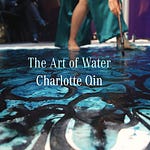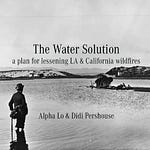In this podcast I interview Angelina Cook, who has been working tirelessly for many years protecting the waters in Mt Shasta and McCloud area, where she is on the Water Council.
We have a discussion around grey and green infrastructure of water. Gray infrastructure is human built structures to manage our water system. Green infrastructure, also called nature based solutions, is nature managing our water systems. Gray parts of the infrastructure use dams to store water. Green parts of the infrastructure use wetlands and aquifers to store water. Gray infrastructure uses chemical sewage plants to clean the water, green infrastructure uses wetlands, microbes, fungi, mussels etc to clean the water. Gray infrastructure uses electricity and aqueducts to move water. Green infrastructure uses the sun to evaporate the water and the wind to move it around. Gray infrastructure uses levees, deeper channelized rivers, and dams to do flood control. Green infrastructure uses floodplains, wetlands, rich soil, and vegetation for flood control.
Here is a list of resources and references on green infrastructure and nature based solutions.
Conservation International on green-gray infrastructure https://www.conservation.org/projects/green-gray-infrastructure
Environmental Protection Agency (EPA) in the US on “Why you should consider green infrastructure for your community” https://www.epa.gov/G3/why-you-should-consider-green-stormwater-infrastructure-your-community
EPA list of green infrastructure funding opportunities https://www.epa.gov/green-infrastructure/green-infrastructure-funding-opportunities
AAAS (American Association for the Advancement of Science) on “Barriers to equitable implementation of green and nature based solutions” https://www.aaas.org/events/community-and-organization-panel-discussion-green-infrastructure
Frantzeskaki, Niki. "Seven lessons for planning nature-based solutions in cities." Environmental science & policy 93 (2019): 101-111 https://www.sciencedirect.com/science/article/pii/S1462901118310888
“A review of nature-based solutions for urban water management in European circular cities : a critical assessment based on case studies and literature” by Hasan Volkan Oral et al https://iwaponline.com/bgs/article/2/1/112/71868/A-review-of-nature-based-solutions-for-urban-water
…
If you would like to support this work please consider being a paid subscriber of this newsletter or joining my patreon at www.patreon.com/watercology














Share this post